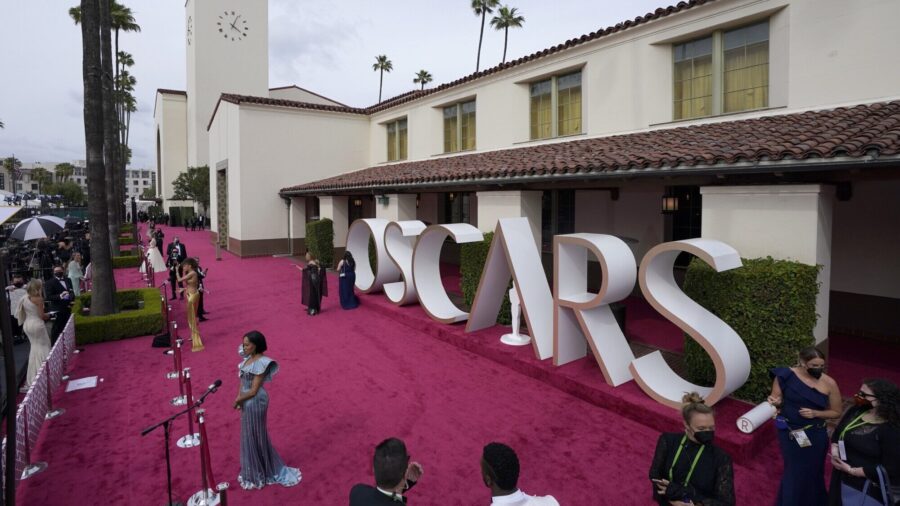The Academy Awards television audience plunged to 9.85 million viewers on ABC, less than half of the Oscars’ previous low and continuing a startling trend of viewer tune out for awards shows.
The Nielsen company’s preliminary estimate shows that the audience who watched “Nomadland” win best picture on Sunday was 58 percent below last year’s tally of 23.6 million, which had set the previous record for least-watched Oscars telecast. ABC owns broadcast rights for the Oscars until 2028.
Following a year where movie theaters were mostly closed due to COVID-19, people were unexcited about or unfamiliar with movies they primarily streamed at home. Producers tried to fight through pandemic fatigue with a hostless program and a small, socially-distanced audience that didn’t wear masks during the broadcast.
The event drew mixed reviews, and renewed questions about the types of movies the industry makes and wants to honor.
“It was agonizing for me to get through the show last night. It was pure torture,” said Marc Berman, a veteran television analyst who writes the “Programming Insider” newsletter, on Monday.
The Oscars do best in years when popular movies are up for awards—the telecast drew 55 million viewers when “Titanic” won best picture in 1998—but no movie came close to that impact. As a result, viewers sat through “long acceptance speeches from people you don’t know in movies you never heard of,” Berman said.
All awards shows have been in a ratings free-fall. Both the Golden Globes (6.9 million viewers) and Grammy Awards (9.2 million) had record low audiences this year.
The normal glitz, glamour and excitement of these programs have been muted by the pandemic. Instead, producers have had to deal with live audiences either limited or non-existent, presented to an audience already sick of seeing people on Zoom.
Robert Lloyd, critic for The Los Angeles Times, noted that Academy Awards producers Steven Soderbergh, Stacey Sher and Jesse Collins wanted to have the program look more like a film. Instead, “it actually dulled the image and made a live event feel less so,” Lloyd wrote. “In a bid for elegance, the broadcast courted sluggishness.”
More than ever, the Oscars needed to simply show more of the movies they were honoring, wrote Darren Franich in Entertainment Weekly.
But there were relatively few clips. The show lacked production numbers and was light on scripted comedy. Winners were also not rushed offstage with music designed to shorten acceptance speeches—for better or worse.
The show took some risks creatively, although one of them—ending the night with the best actor winner instead of building up to the best picture honoree—may have proved disorienting to some viewers.
Some of the other problems pulling people away from awards shows are not unique to the movie industry. Entertainment audiences are splintered, with fewer events pulling people together communally. And instead of sitting through hours of minor awards, many people know they can see special moments on social media feeds later.
It wasn’t long ago that the Oscars were often the second most-watched television program of the year after the Super Bowl. For most of the 2000s, the Academy Awards audience was in the 35 million to 45 million range each year. Only six years ago, in 2015, the Oscars reached 37.3 million people, Nielsen said.


